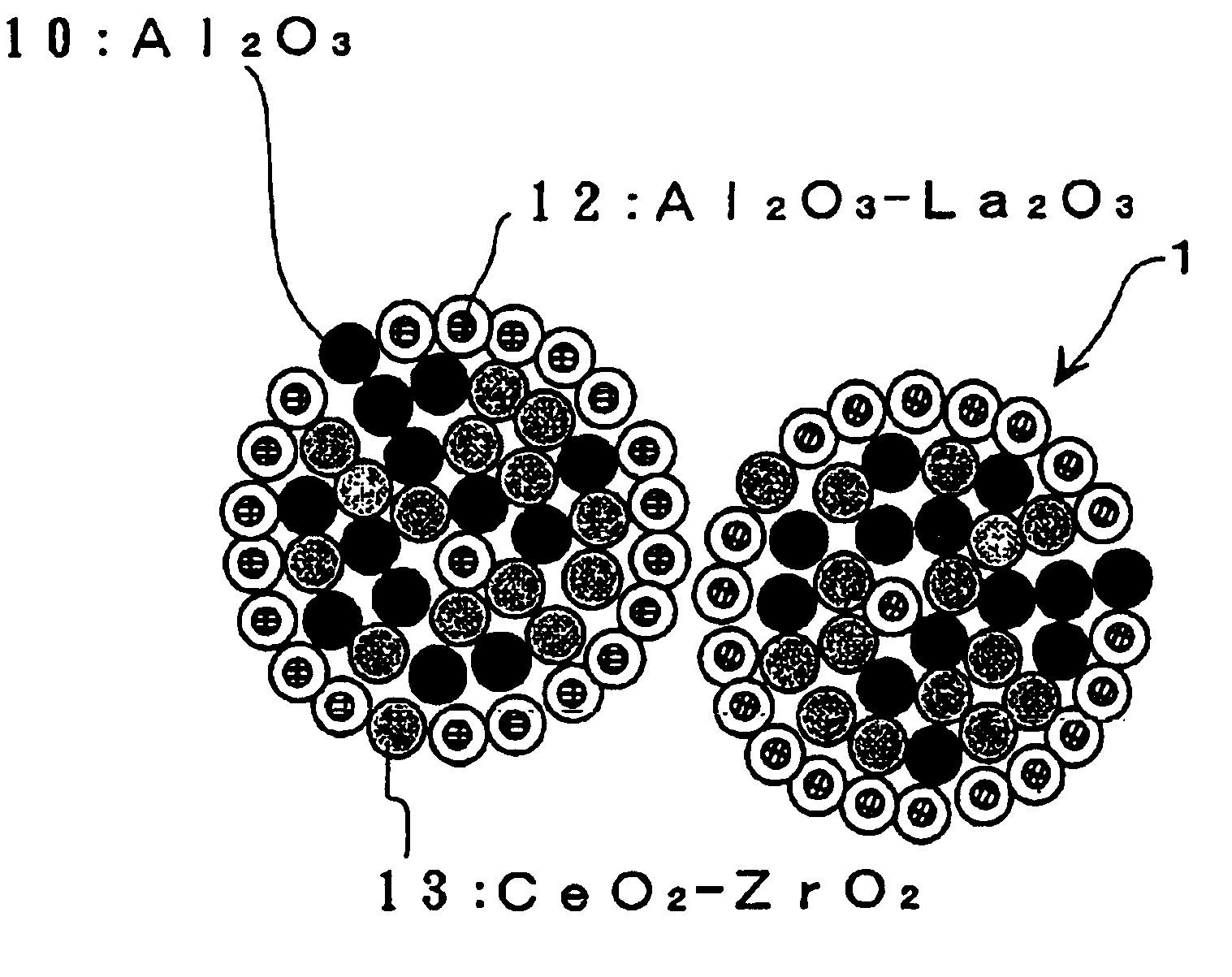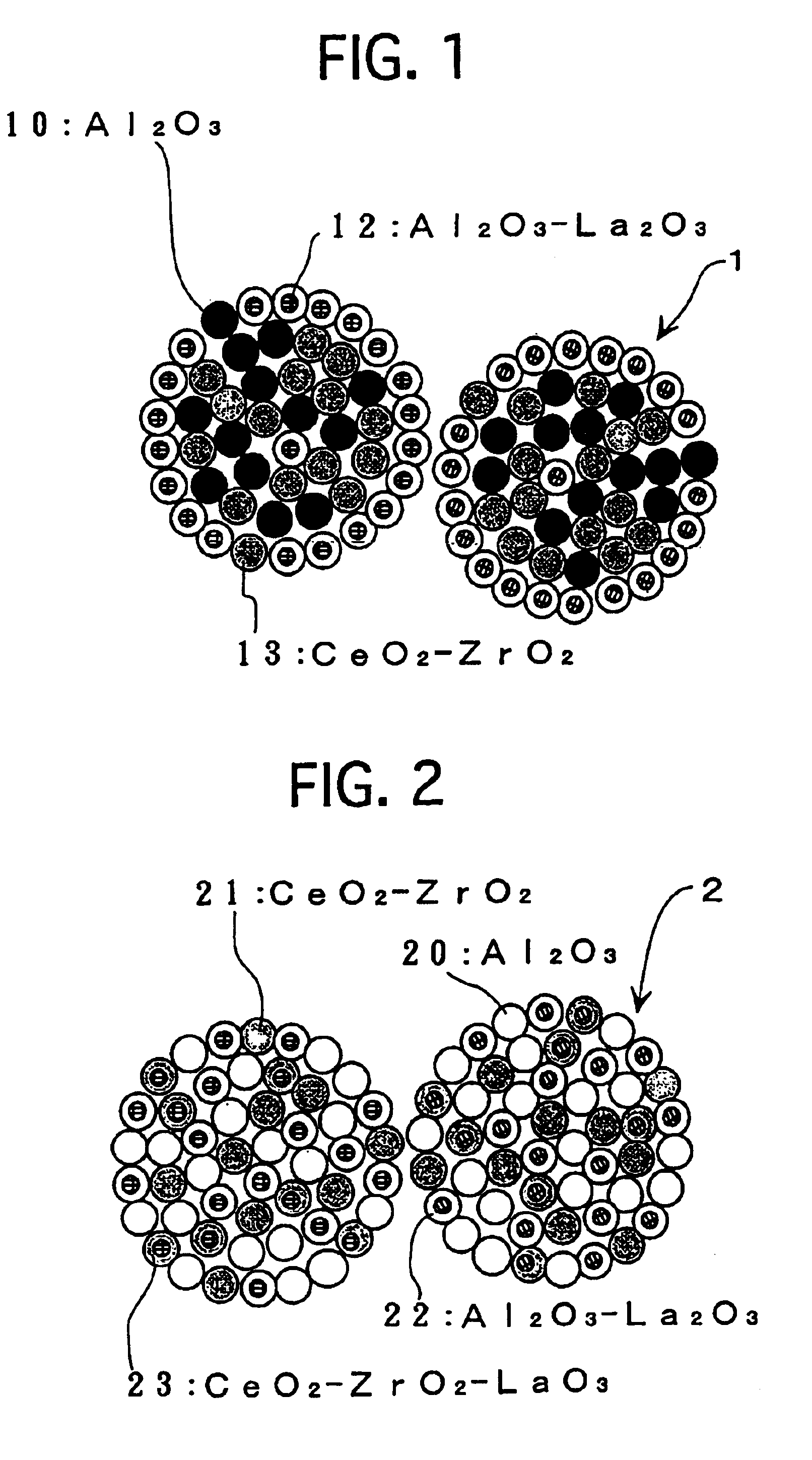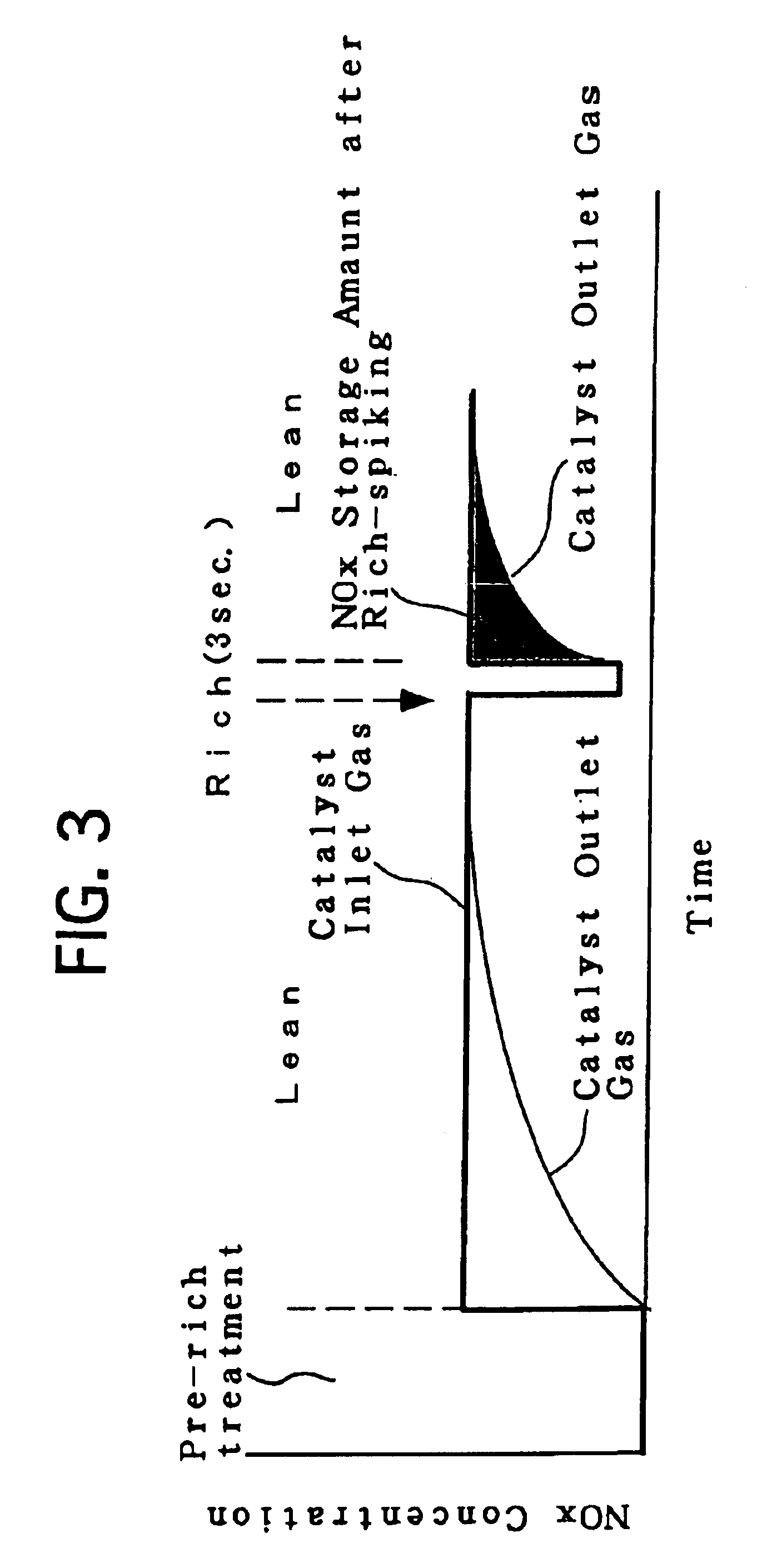Composite oxide, process for producing the same, catalyst for purifying exhaust gas, and process for producing the same
a technology of composite oxide and catalyst, which is applied in the direction of catalyst carriers, physical/chemical process catalysts, separation processes, etc., can solve the problems of sharp deformation of the purifying performance of conventional catalysts, and inapplicability, so as to facilitate the heating of catalyst surfaces, reduce and purify nox, and lack of durability in actual exhaust gases
- Summary
- Abstract
- Description
- Claims
- Application Information
AI Technical Summary
Benefits of technology
Problems solved by technology
Method used
Image
Examples
example no.1
EXAMPLE NO. 1
An aqueous solution “A”was prepared by solving 1.0 mol of aluminum nitrate nona-hydrate (Al(NO3)3.9H2O), 1.0 mol of cerium nitrate hexa-hydrate (Ce(NO3)4.6H2O), 1.0 mol of zirconyl oxynitrate di-hydrate (ZrO(NO3)2.2H2O) and 124 g of hydrogen peroxide water, having a concentration of 30% by weight (equivalent to a content of 1.1 mol as H2O2), in 2,500 cm3 of pure water.
While, an aqueous solution “B” was prepared by solving 8.4 mol of aluminum nitrate nona-hydrate and 0.12 mol of lanthanum nitrate hexa-hydrate (La(NO3)3.6H2O) in 2,500 cm3 of pure water.
Moreover, 2,500 cm3 of a neutralizing aqueous solution was prepared which included NH3 in an amount as much as 1.2 times by mol for neutralizing all the nitric acid radicals.
A total amount of the neutralizing aqueous solution was put in a reaction container, and the aqueous solution “A” was added thereto while stirring the neutralizing aqueous solution with a mechanical stirrer and a homogenizer. The mixture was kept stirre...
example no.2
EXAMPLE NO. 2
Except that an aqueous solution “A” and an aqueous solution “B”, whose compositions are set forth in Table 1, were used, a composite oxide powder was prepared in the same manner as Example No. 1.
The resulting composite oxide powder was observed with an FE-TEM, and was analyzed by an EPMA. As a result, similarly to Example No. 1, it was found to comprise agglomerated particles, which had an average particle diameter of about 10 μm. The agglomerated particles were constituted mainly by primary particles, being composed of Al2O3, primary particles, being composed of CeO2—ZrO2, and primary particles, being composed of Al2O3—La2O3. The CeO2—ZrO2 primary particles were distributed more in the surface side of the agglomerated particles. The Al2O3—La2O3 primary particles were distributed more in the inner portion of the agglomerated particles.
According to the results obtained by the EPMA analysis, the surface-side CeO2 content was 70 mol % with respect to the total CeO2 content...
example no.3
EXAMPLE NO. 3
An aqueous solution “A” was prepared by solving 1.0 mol of cerium nitrate hexa-hydrate, 1.0 mol of zirconyl oxynitrate di-hydrate and 124 g of hydrogen peroxide water, having a concentration of 30% by weight (equivalent to a content of 1.1 mol as H2O2), in 2,500 cm3 of pure water.
An aqueous solution “B” was prepared by solving 9.4 mol of aluminum nitrate nona-hydrate and 0.12 mol of lanthanum nitrate hexa-hydrate (La(NO3)3.6H2O) in 2,500 cm3 of pure water.
Except that the aqueous solution “A” and the aqueous solution “B” were used, a composite oxide powder was prepared in the same manner as Example No. 1. The resulting composite oxide powder was observed with an FE-TEM, and was analyzed by an EPMA. As a result, similarly to Example No. 1, it was found to comprise agglomerated particles, which had an average particle diameter of about 10 μm. The agglomerated particles were constituted mainly by two primary particles, which had an average diameter of 10 nm or less. Primary...
PUM
| Property | Measurement | Unit |
|---|---|---|
| diameter | aaaaa | aaaaa |
| particle diameter | aaaaa | aaaaa |
| particle diameter | aaaaa | aaaaa |
Abstract
Description
Claims
Application Information
 Login to View More
Login to View More - R&D
- Intellectual Property
- Life Sciences
- Materials
- Tech Scout
- Unparalleled Data Quality
- Higher Quality Content
- 60% Fewer Hallucinations
Browse by: Latest US Patents, China's latest patents, Technical Efficacy Thesaurus, Application Domain, Technology Topic, Popular Technical Reports.
© 2025 PatSnap. All rights reserved.Legal|Privacy policy|Modern Slavery Act Transparency Statement|Sitemap|About US| Contact US: help@patsnap.com



